The Via del Ferro (Iron Way) comes to an end in the municipality of Valtorta, where there were many mining deposits. In this town, the main settlement of the area, the Variante Alta (upper route) and Variante Bassa (lower route) join, and continue on a single path to the former mining location Falghera, at the end of the Iron Way. In order to link the Iron Way to the Rete Escursionistica Regionale (Regional Hiking Network), the intention is to extend the route from the main town of Valtorta towards Ceresola and Piani di Bobbio (an old mining route) to the junction with the existing DOL (Dorsale Orobica Lariana, Orobic Lario Ridge) route.
Tracciato Storico
Itinerario escursionistico
Difficoltà: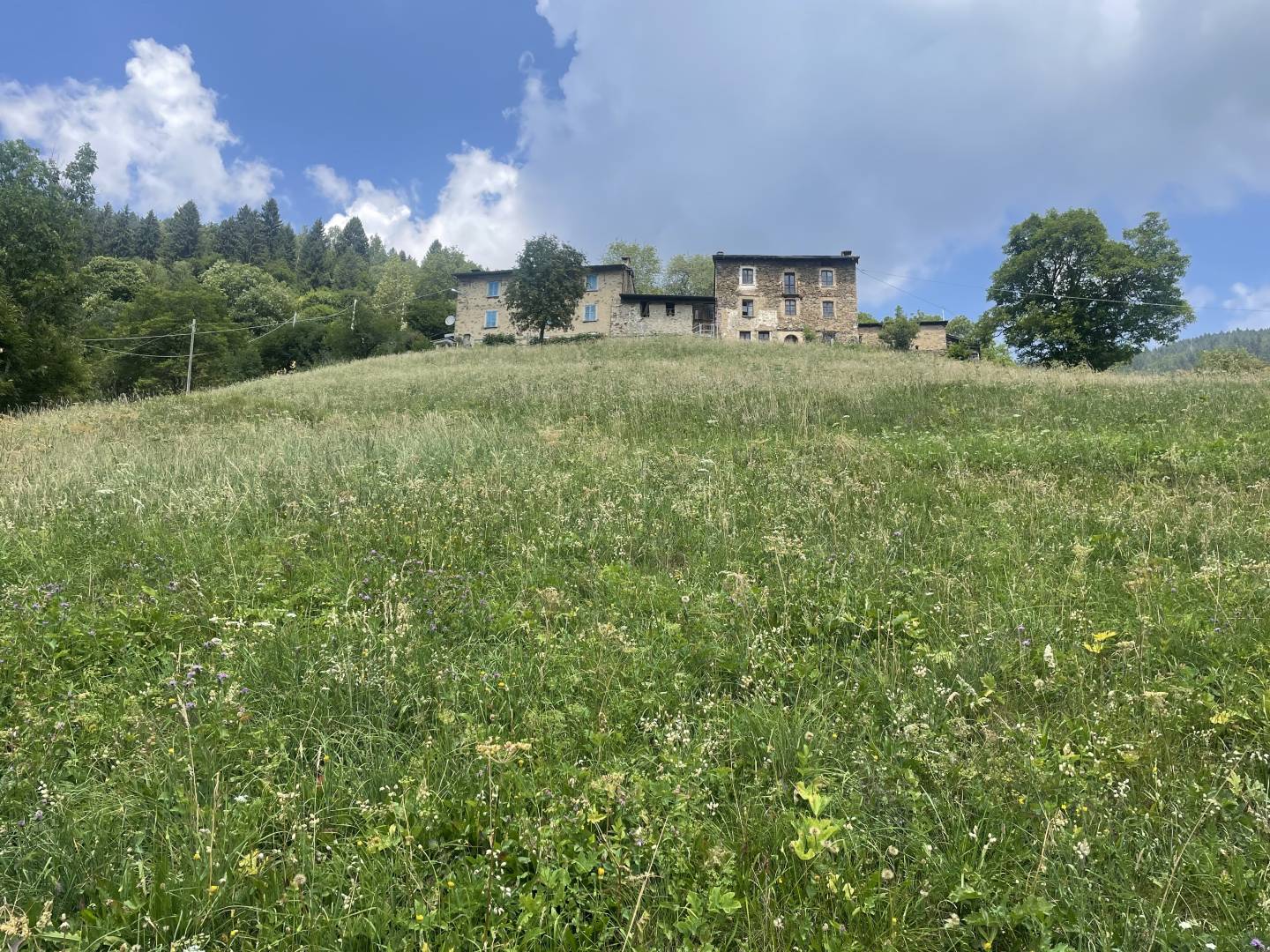
Outside the village, on the mule tracks with mountain huts above Cantello, when walking the path that climbs from the hamlet towards Ornica or the peak Pizzo dei Tre Signori, you can see many mural paintings dating from the 17th to the 19th century, mainly religious in subject matter but sometimes dedicated to scenes from everyday life: the latter is the case at the Agalì hut, where a knight smoking a pipe receives the gift of a carafe of wine and a branch from a festive individual in 18th-century clothing; in the lovely location of Pigolotta, there are two frescoes depicting the Madonna and Saints; a small painting dating back to the 17th century, a composition that is easier to discern, can be seen on the Madona hut; a beautiful 19th-century votive shrine, located on the mule track to Costa, has all its walls painted, with a Pietà, Saint Joseph and Saint Roch, the Immaculate Conception and a male figure accompanying children, by a painter named Antonio Pagnona.
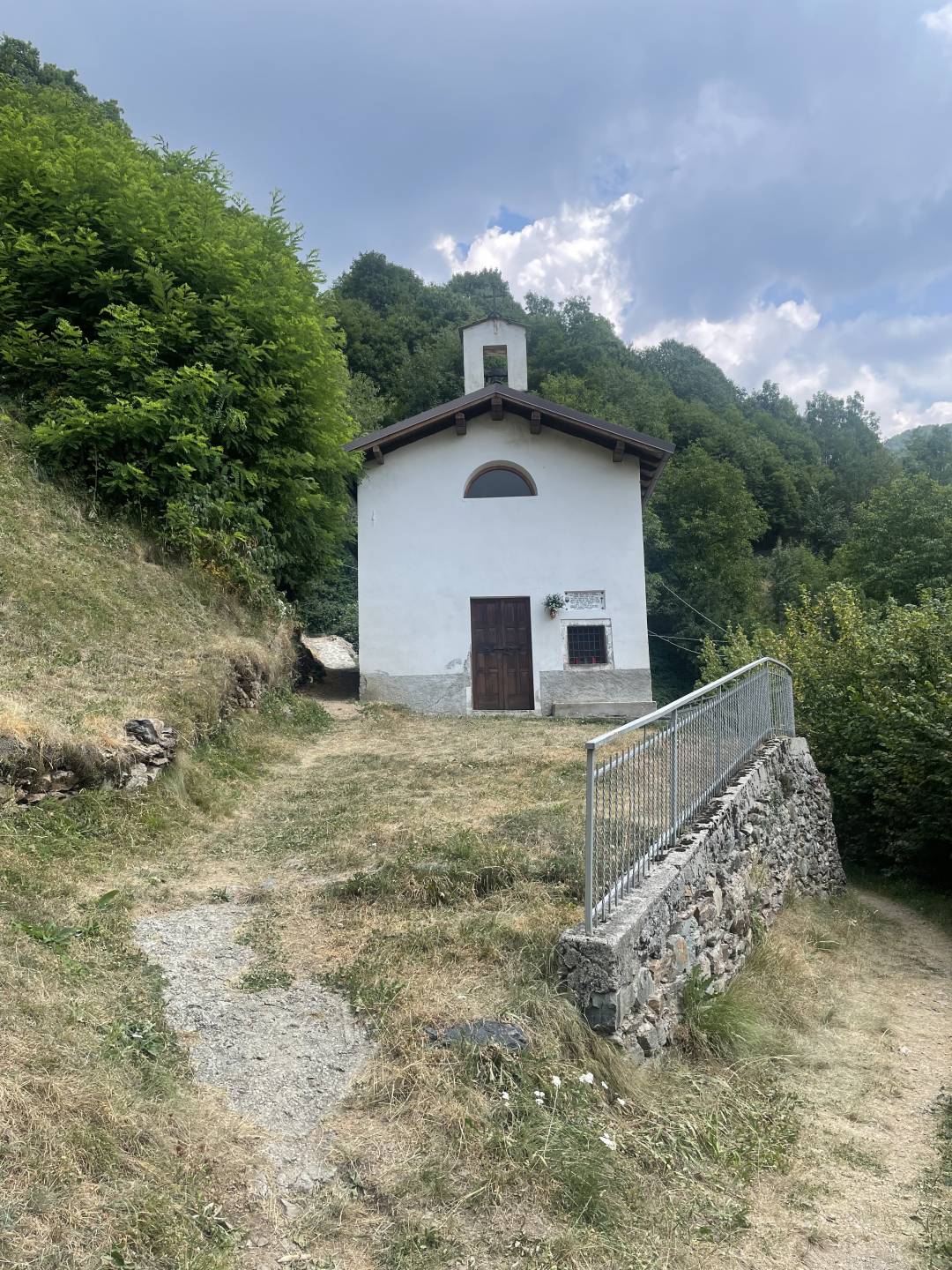
In the location named Cantello di Valtorta, in addition to the outdoor frescoes, at the end of the hamlet, after the Annovazzi house, you can see the Oratory of Saints Roch and Sebastian, built by Paolo and Bernardo Annovazzi, a vote of thanks for having escaped the plague (1630); the small building is now faced in plaster after a recent restoration, with a small lunette window, the portal and another small window on the right. Inside, the altarpiece depicts the Virgin and Child between Saint Sebastian and Saint Roch lifting his robe to show the sores of the plague: this work by an unknown hand dates back to soon after the chapel was built (1659).
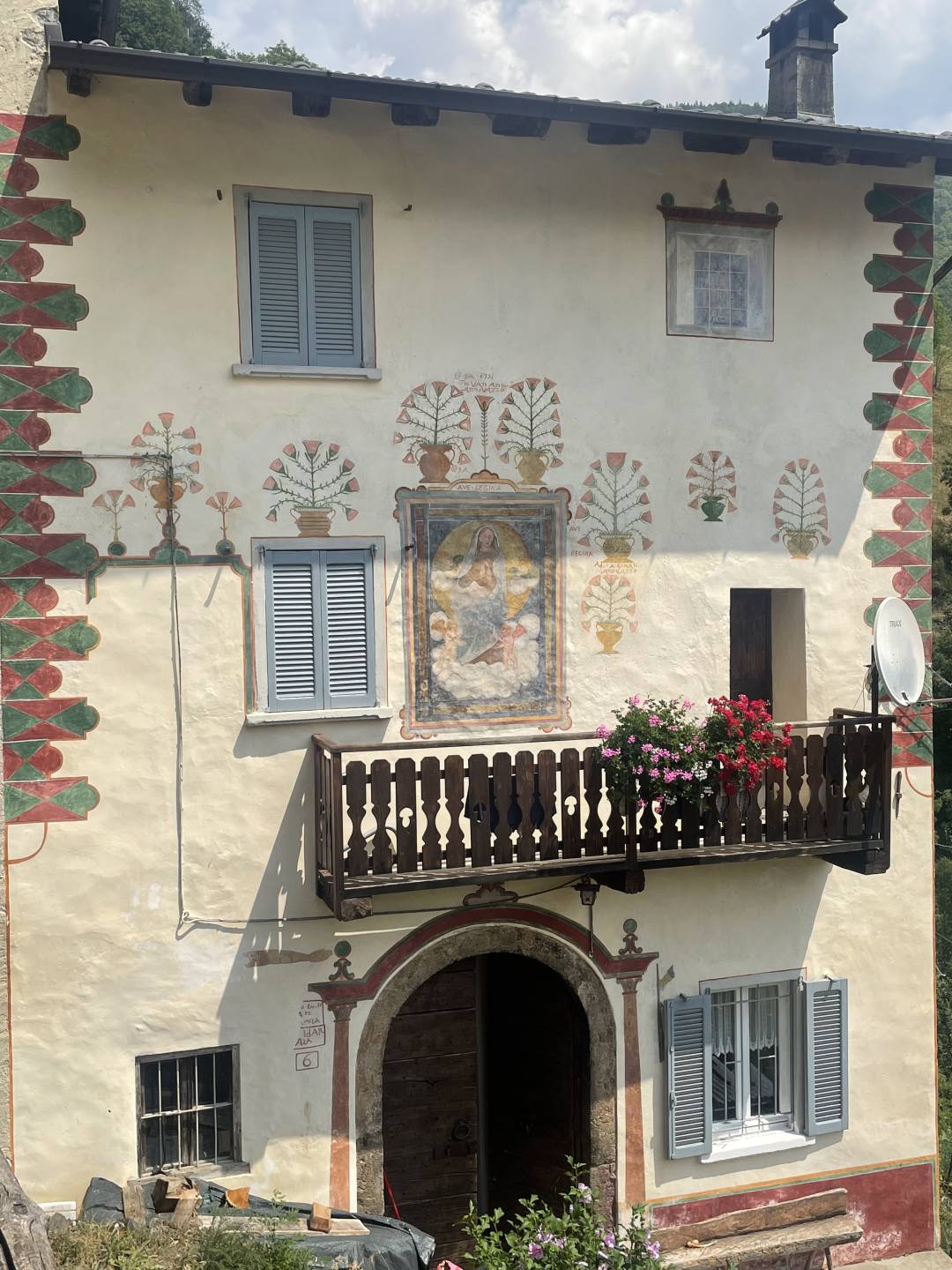
The village has a series of rustic south-facing stone buildings; at the centre of the oldest group of houses there is a section of the street that is protected by porticoes. Near the start, we see a fine religious painting with the Madonna and Child Jesus enthroned between Saint Anthony Abbot and Saint Sebastian: a work of art that is delightful for the simplicity and candour of the sentiments expressed, unfortunately in a poor state of preservation; underneath, almost illegible, is the inscription: AVE REGINA CELORU XIX SETEMB…. MDLVIII. Continuing along the path, after a short stretch of road under porticoes, we reach the picturesque Annovazzi house, on whose façade rustic painted floral decorations can be seen, dated 1751, a Madonna and Child (now indiscernible, perhaps what remained after the removal of the fresco) and other images that are difficult to identify (on the left there is an arm and a capital).
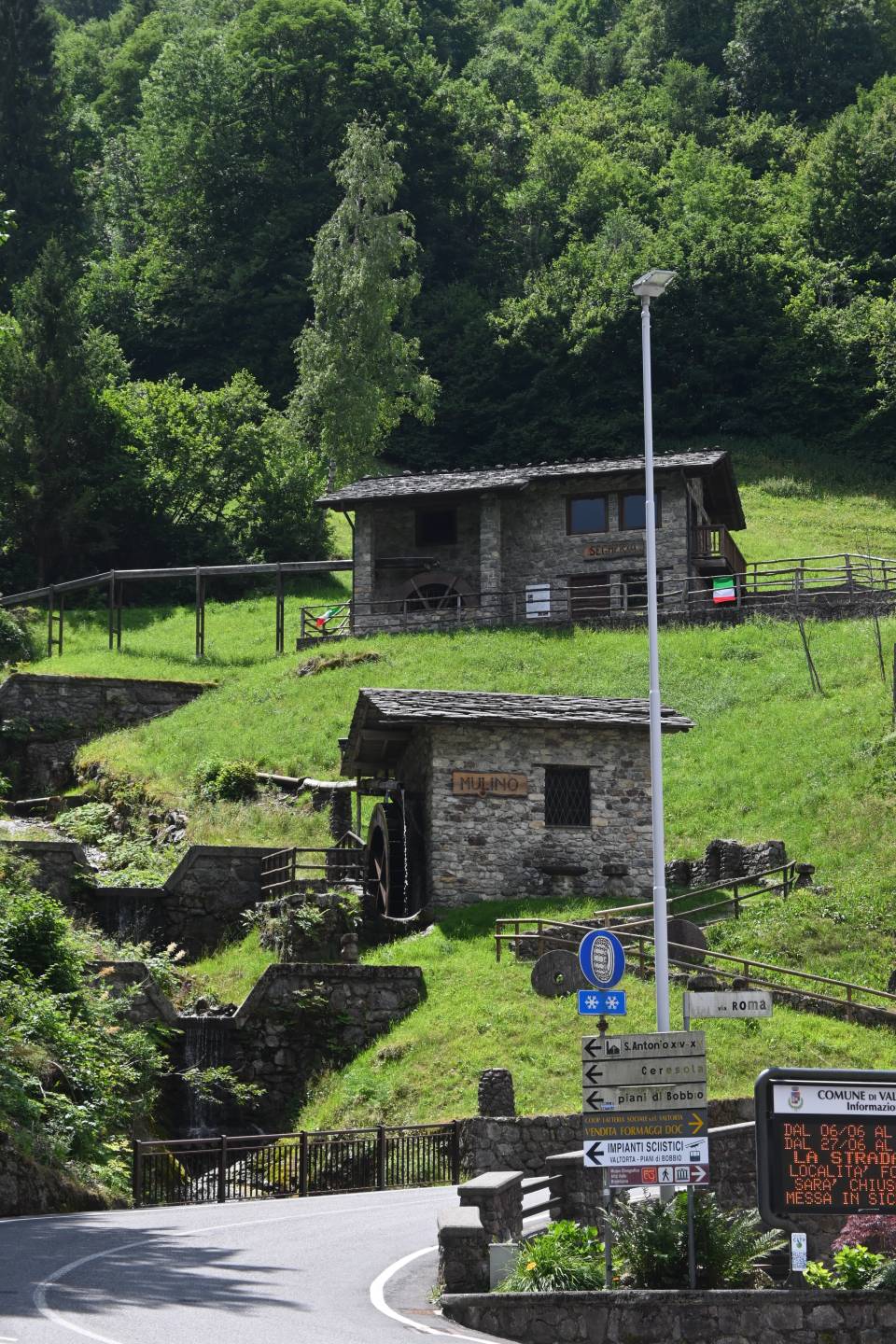
The Bolgià nature reserve, reached by means of an ancient humpback bridge, receives water from the Val Grobbia Valley, which is channelled into a mill race and powers the wheels driving the tilt hammer and millstone, reconstructed in their original forms. The small bridge and the two constructions for the mill and the tilt hammer, together with the nearby forge, comprise a group of buildings of great historical and anthropological interest, and they have now become part of the Valtorta museum itinerary. In operation until the years preceding the last war, the tilt hammer and mill were strategically located at a position where everyone directed towards the various districts necessarily had to pass, therefore an inevitable destination for all those who wished to use the services, indispensable in those days, of milling cereals and manufacturing utensils. The tilt hammer building has all its equipment still in working order: the hammer, forge, grinding wheels and all the other mechanisms (hammers with moulds for bolts and rods, anvils, tongs and mallets) involved in metalworking. Another interesting feature of this plant is the water-powered blower, which drives air into the forge to fan the combustion of the charcoal. On the right of the mill race stands the mill building itself, whose wheel drives the millstones and pestles for maize, rye and barley.
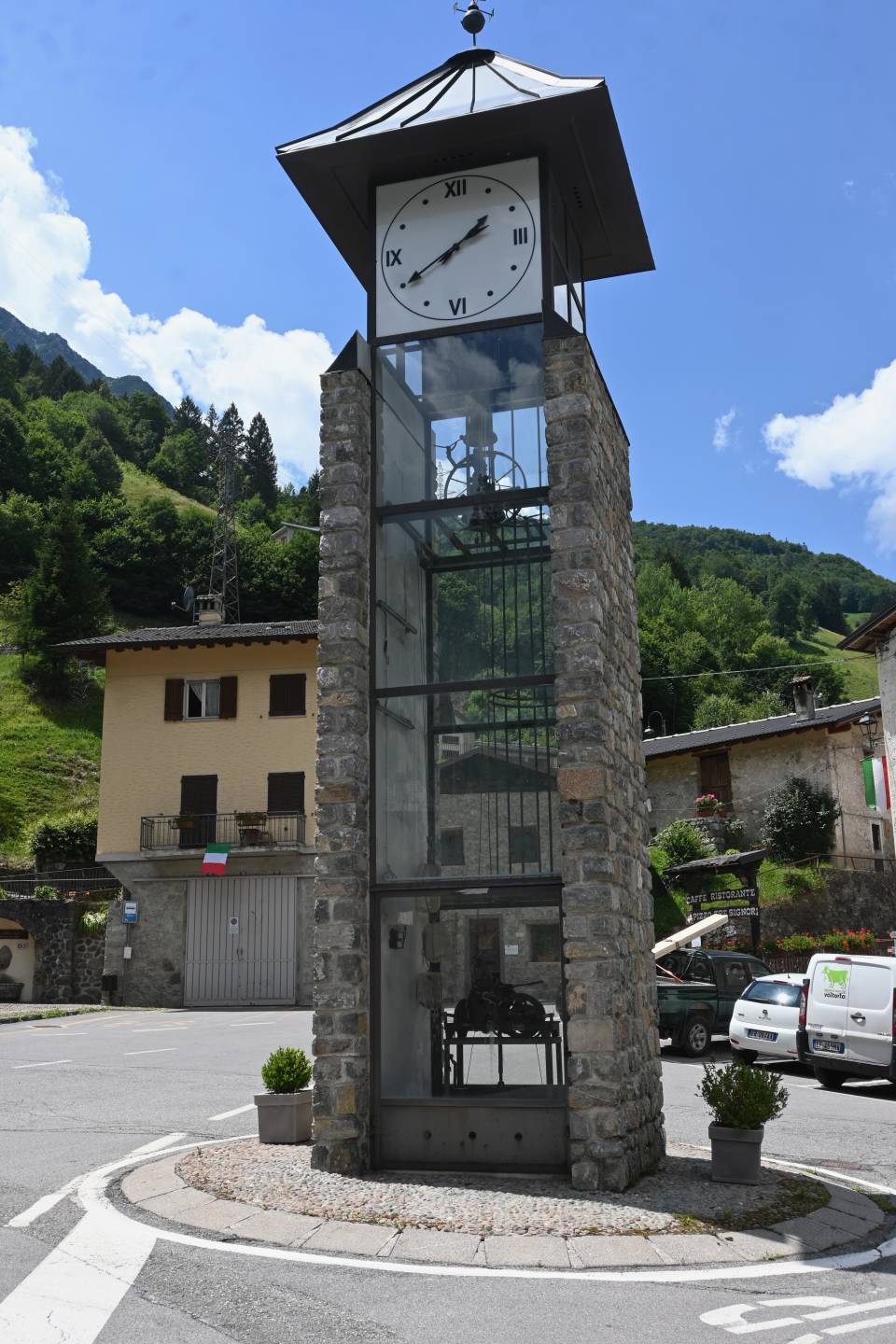
The entrance to the village of Valtorta is given great character by the clock tower, whose operation can be seen through the glass walls of the structure that contains the ancient mechanism with its set of small bells.
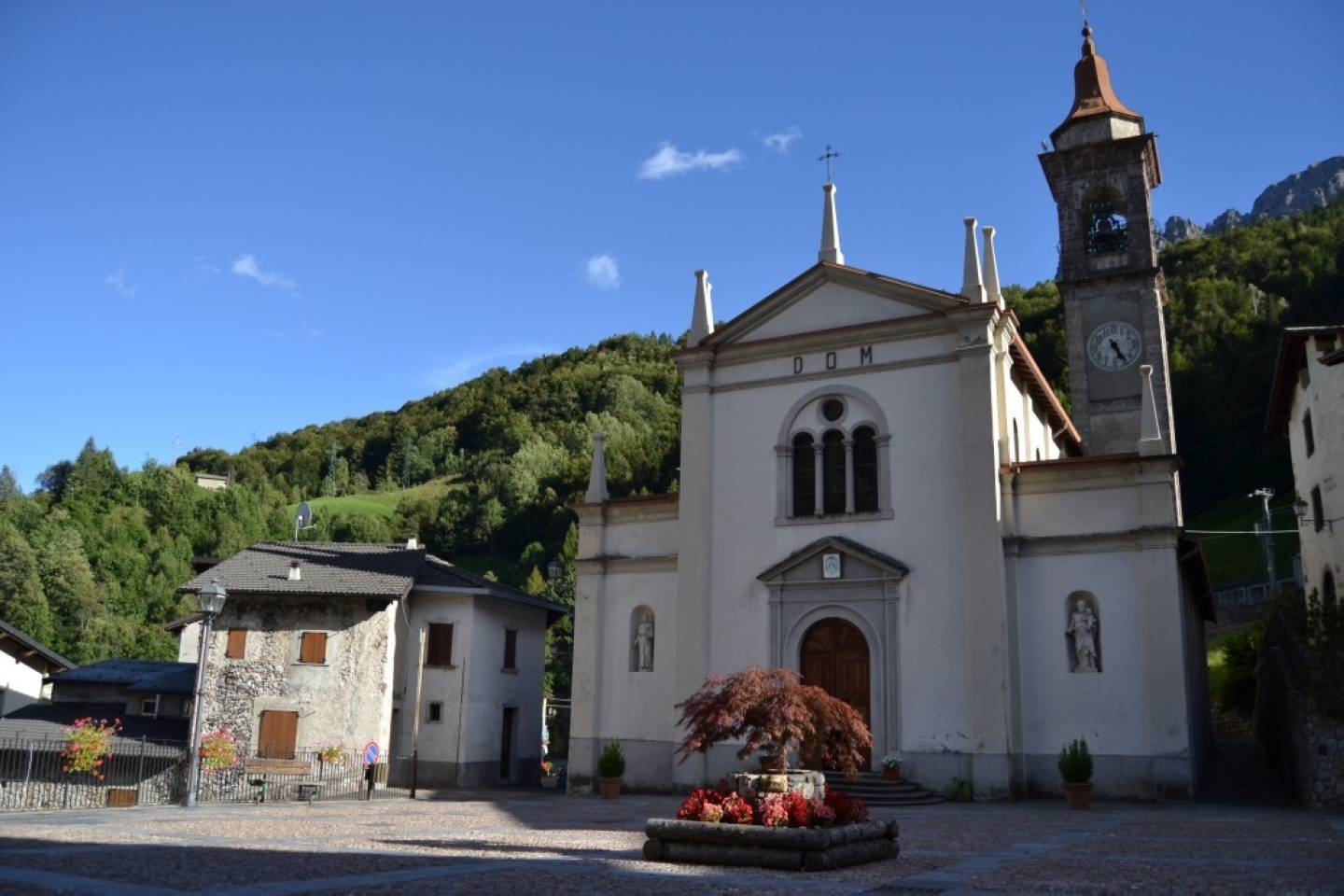
The present form of the parish church, dedicated to the Assumption of Mary, dates back to the early 20th century when the existing building was renovated by architect Don Antonio Piccinelli, commissioned by Don Stefano Gervasoni, who was parish priest of Valtorta for more than fifty years up until 1949. The primitive church maintained ties of dependence with the church of San Pietro di Primaluna in Valsassina until around the 13th century, when it was rebuilt and enlarged to meet the needs of the population that had grown as a result of more widespread mining activities. In the second half of the 15th century, the building was again reconstructed and enlarged, as described in the proceedings of the two visits made by San Carlo (Saint Charles) in 1566 and 1582. It was said that the church was “rather beautiful and decorated”. Today, of that construction, only the apse area remains, used as a sacristy. Works of art include two valuable polyptychs from the Renaissance period, one of which was in the Torre church, and the magnificent portrait of the Virgin by Flemish artist Pietro Mera, donated in about 1615 by a merchant from the Busi family. On the exterior wall of the church there are two 16th-century frescoes: in the upper panel there is the Lion of Saint Mark, while the lower panel depicts a blessing Saint Anthony Abbot within an architectural frame. Separating the two frames are the coats of arms of the patrons, the Ragazzoni and the Annovazzi families (see the file The Lands of the Baschenis).
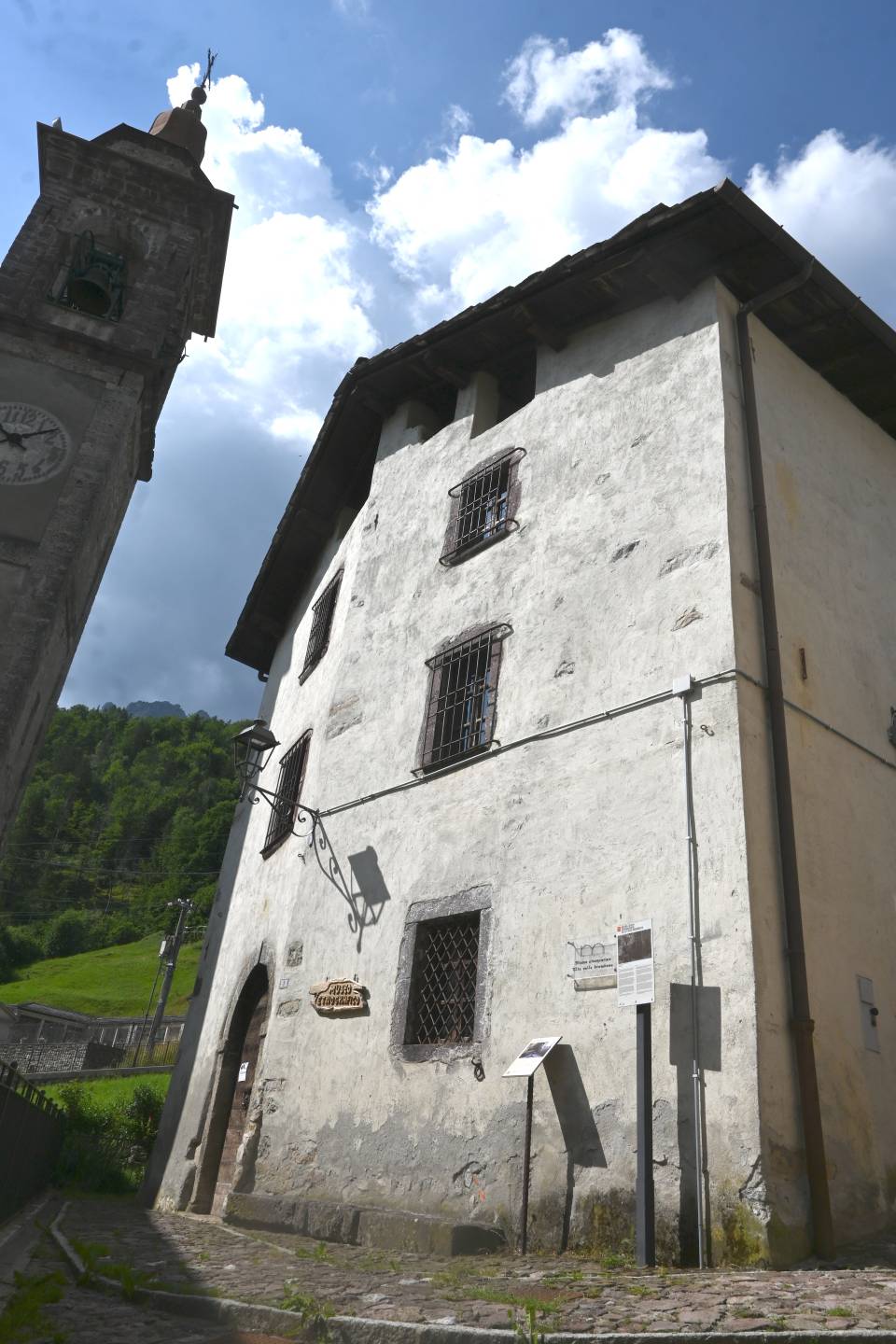
Ethnographic Museum. This 15th-century palazzo was the seat of the Venetian Vicar and after the arrival of Napoleon, it was given the name of Casa della Pretura (Magistrate’s Court) due to the presence of this official. The building has three floors: an extensive portico on the ground floor, with light provided by two large stone arches, used for the guards’ and soldiers’ barracks; the main floor opens onto a large corridor with a plan corresponding to the one below, with a terracotta floor and a ceiling lined with timber planking and supported by square wooden beams; the second floor is the same size as the one below, but it is less richly decorated. One of the most interesting interiors is the “stüa”, the traditional Valtorta kitchen, a room with a smoke-blackened vaulted ceiling and a cobbled floor at the centre of which is the hearth, formed of four stones arranged in square shape around a tripod above which hangs a chain embedded in the vault. The building houses the Museo etnografico Alta Valle Brembana (Ethnographic Museum of the Upper Brembana Valley), with hundreds of objects evoking traditional settings, places of work and leisure and the interiors of dwellings. The rooms include: the old kitchens, the bedroom, the blacksmith’s workshop, the cobbler’s table, the carpenter’s workbench, the dairy with its large cauldrons and copper pans, the wool spinning wheel, the loom, the wood lathe, the knife-grinder’s cart, and a myriad of other tools used for crafts that were once important and that today remain only as memories (file The Lands of the Baschenis).
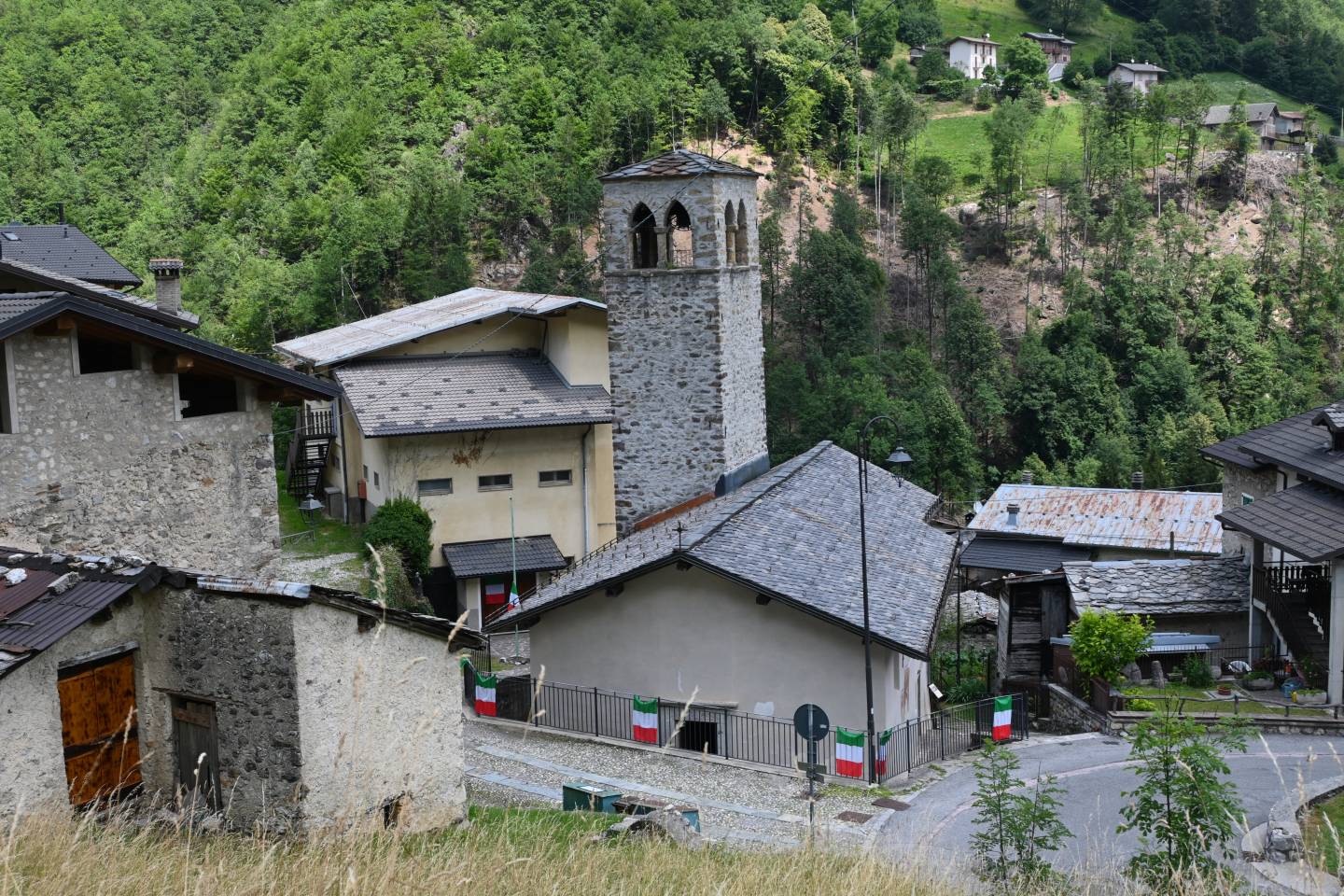
This ancient oratory was founded in 1367 by Alberto, also known as Beta, from the important Ragazzoni della Torre family, who for many years held rights of patronage over the church and so had the authority to appoint a curate. The church is called “alla torre” (at the tower) because it stands near a medieval tower for observation and defence, the remains of which can still be seen in a nearby building. In 1582, following the apostolic visit by San Carlo (Saint Charles), instructions were given to open a main door on the façade and wall up the side doors. The façade was later destroyed by two avalanches, the first time in 1598 and again in 1702, a date that is engraved on the entrance portal in limestone. The church was restored in 1683 by the founder’s heirs, and further restoration work was carried out in 1780 by master builder Giovanni Bianchi, possibly raising the building to its current level. The church is notable for its mullioned bell tower, whose construction began in 1566 and was completed in 1588, and for the frescoes decorating the interior walls. These include compositions dated 1529, on the wall of the second bay, facing the presbytery, depicting scenes from the life of Christ. The panels decorating the chancel, dedicated to the life of Saint Anthony Abbot, are also interesting. Other older paintings can be seen on the right wall and depict Saint Anthony Abbot, two saints, a Madonna and Child, and a Trinity, located behind the pillar of the first arch (file The Lands of the Baschenis).
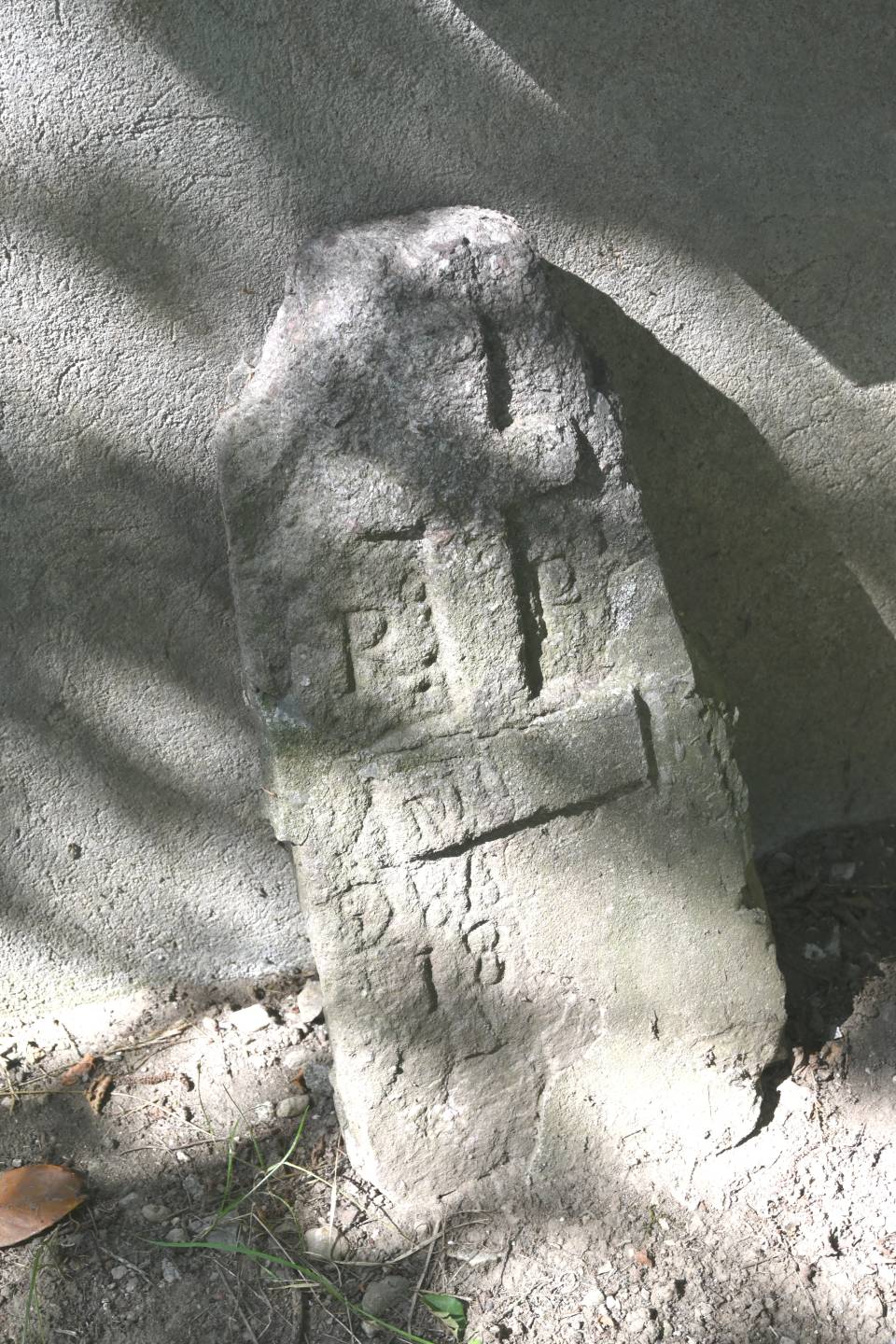
Santella della Madonna della Cintura con due croci incise su pietra. Modesta cappelletta lungo il sentiero per Lengua Buna ma che presenta, appoggiate alla base, sue pietre con due croci in altorilievo e alcune scritte incise, di antica data.
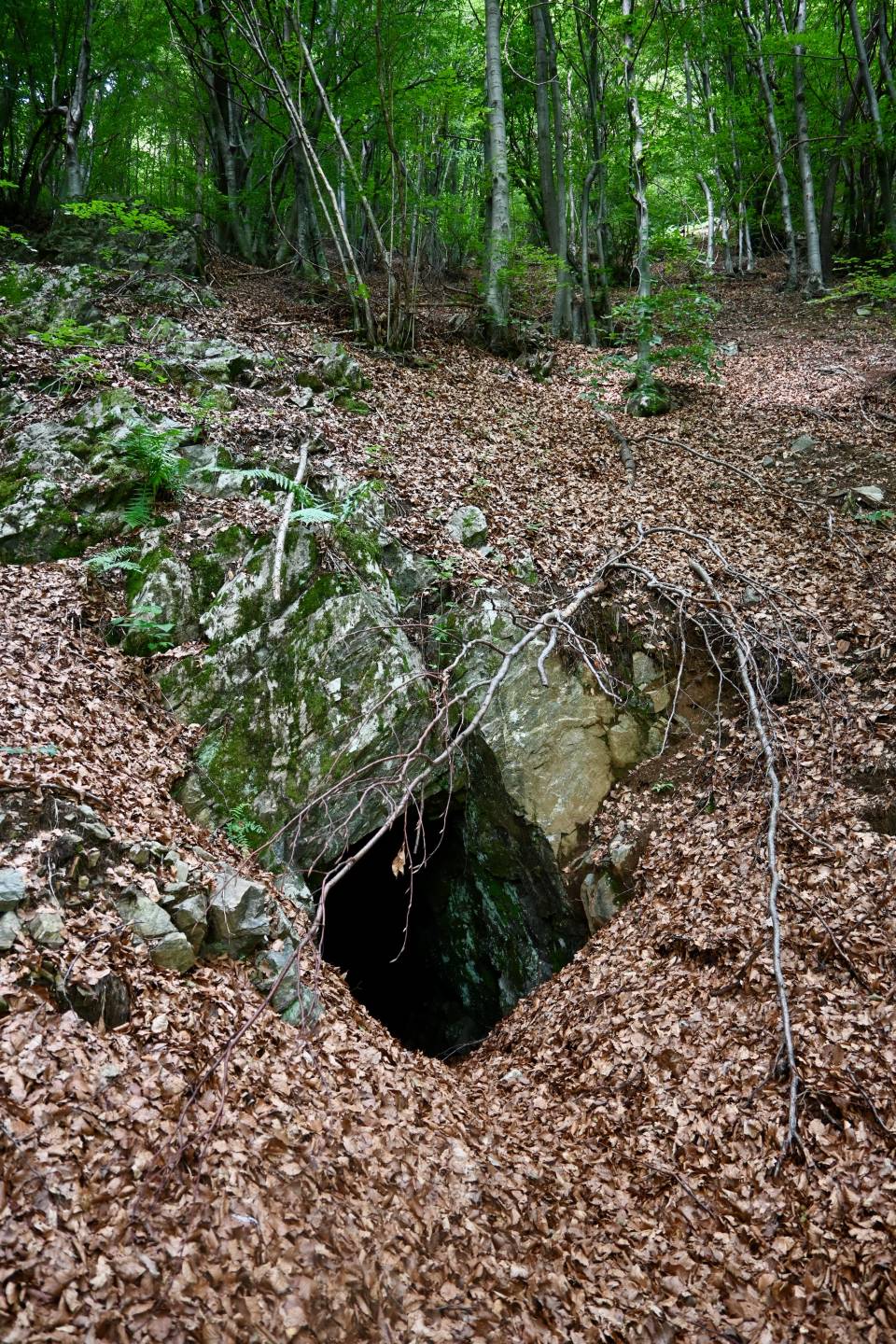
One of the many mine entrances, this is at an altitude of 1,080 metres, providing access to the Valtorta mining areas, on the path to Falghera.
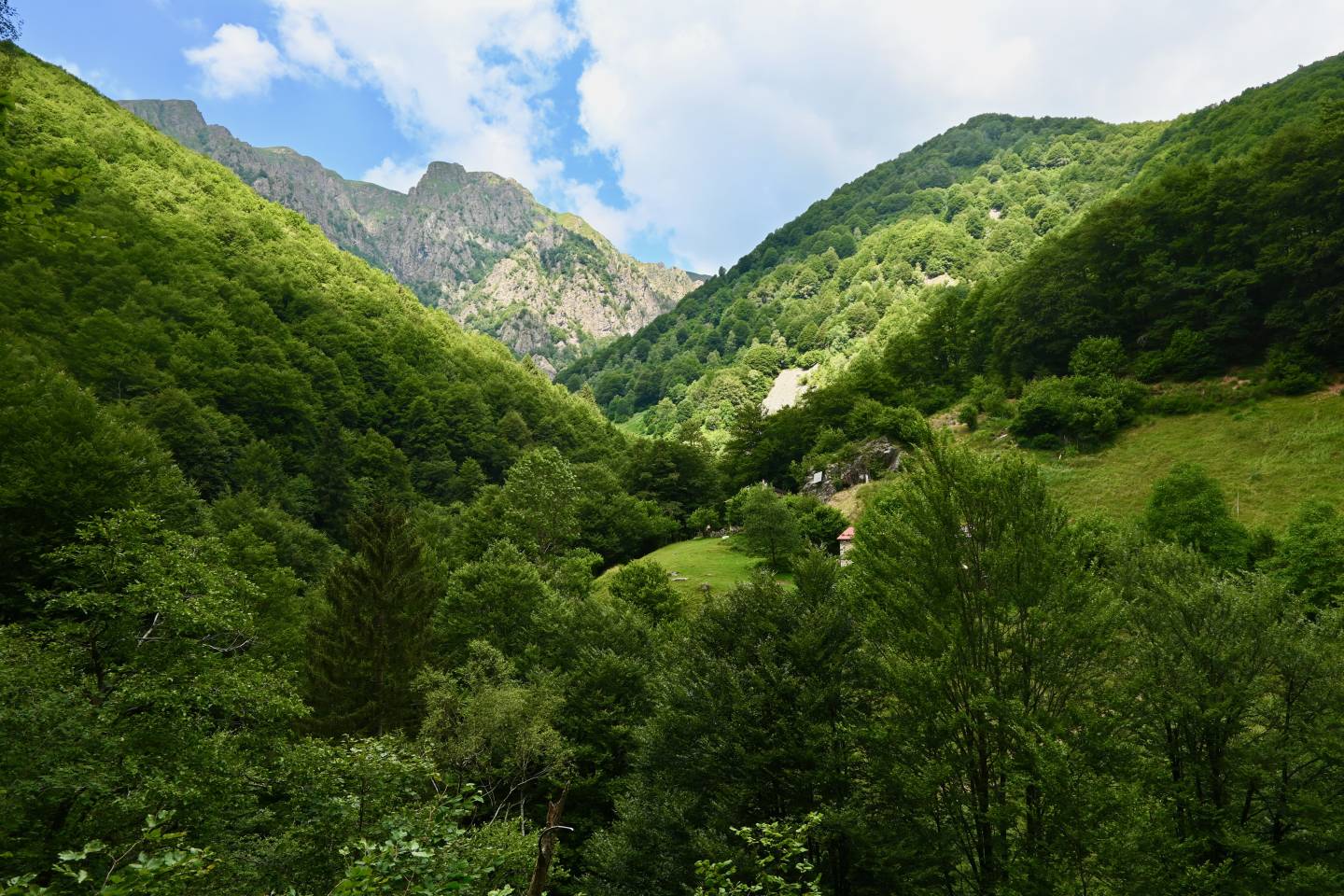
This site consists of several huts at the same altitude, now used only by shepherds, linked by a level stretch of paved path. They are located at the foot of the slope descending from the hill Pizzo di Giovanni, consisting of vast deposits of scree and waste resulting from intense surface mining work typical of the Valtorta area and dating back as far as the 12th century (Trekking sulle Vie Storiche Bergamasche – Trekking on the historic Bergamo Ways, by Lucio Benedetti and Chiara Carissoni).
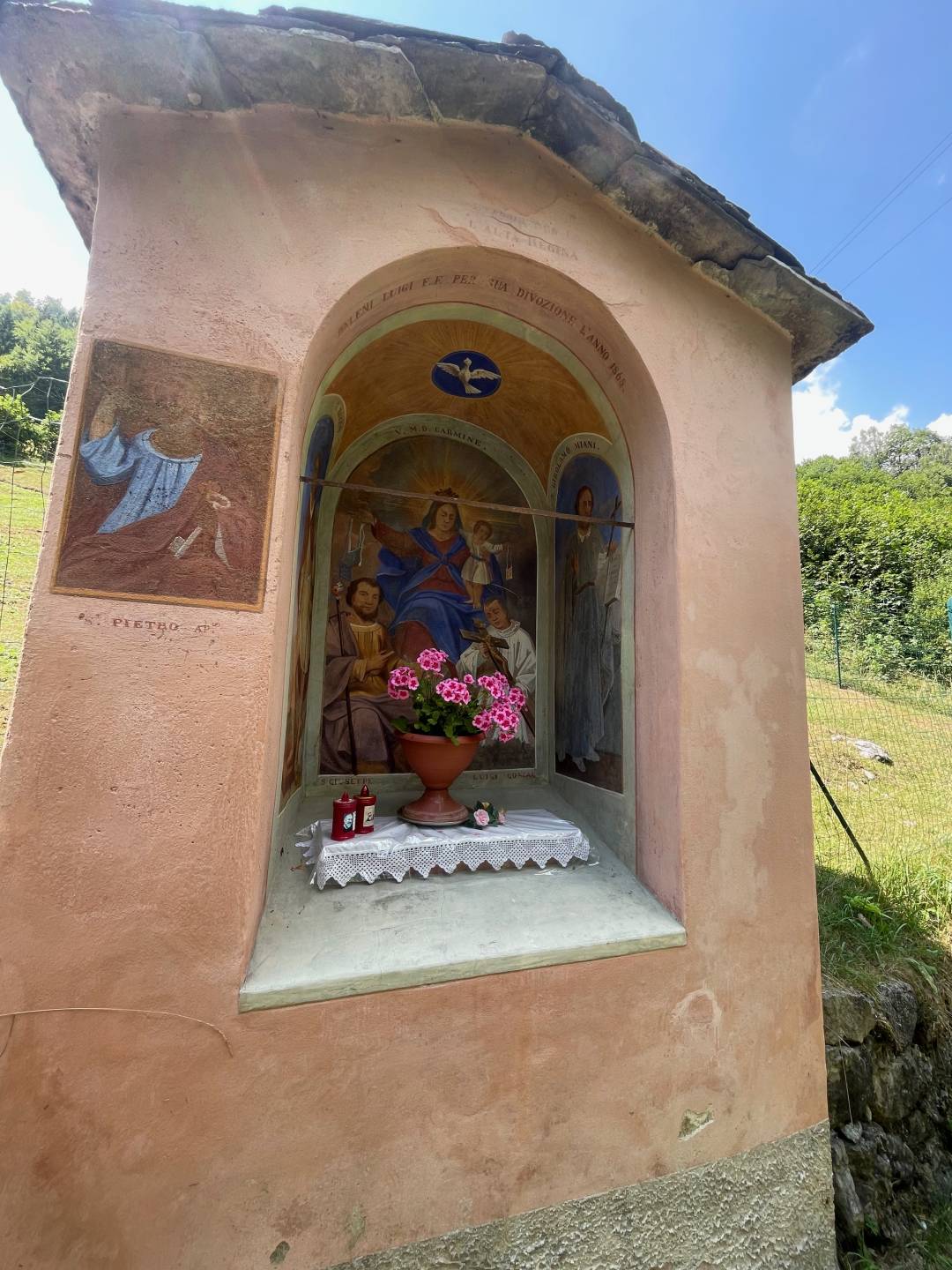
Covered in pink plaster, it has a two-pitch roof, and it was built as a site of religious devotion in 1865. The niche depicts the Madonna del Carmine, Our Lady of Carmel, between two saints; on the sides of the niche are San Gerolamo Miani (Saint Jerome Miani) and Saint Roch. On the exterior façade, to the left, there is a panel with Saint Peter the Apostle.